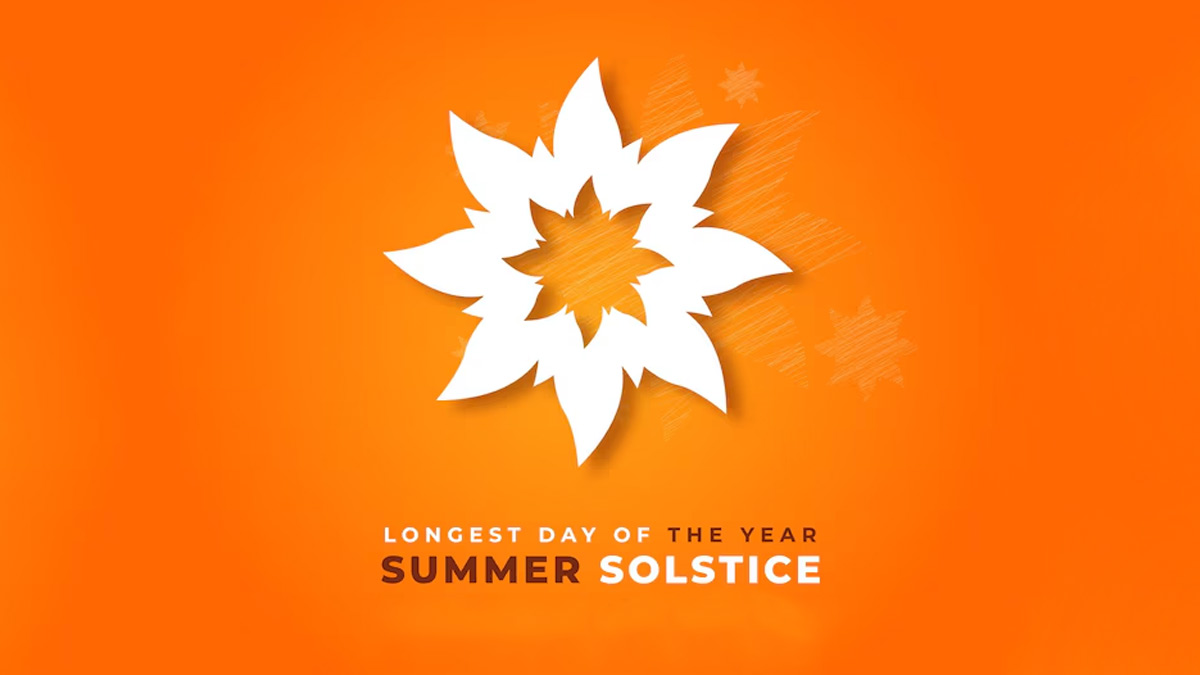
Summer Solstice 2024: When And What Time To Witness the Longest Day of the Year
The summer solstice, an astronomical event that heralds the onset of summer in the Northern Hemisphere, is set to occur on June 20, 2024. This day marks when the Sun's path in the sky is farthest north in the Northern Hemisphere, resulting in the longest period of daylight for the year. Here’s a comprehensive guide to understanding this celestial occurrence date, time, significance and other details.
What Is The Summer Solstice?

The summer solstice occurs when the Earth's axial tilt is most inclined towards the sun, resulting in the longest daylight hours of the year for the Northern Hemisphere. This phenomenon marks the official beginning of summer in astronomical terms. Conversely, in the Southern Hemisphere, June 21st represents the winter solstice, marking the shortest day and the onset of winter.
Summer Solstice 2024 Date
According to NASA, “The summer solstice will arrive on June 20, 2024, for the Northern Hemisphere.” (which corresponds to June 21, 2024 in India).
Summer Solstice 2024 Time
According to NASA, “The summer solstice is the point in the Earth's orbit where the Sun is most illuminating the northern hemisphere. This phenomenon will occur on June 20, 2024, 4:51 pm EDT, 1:51 pm PDT.”
1
2
3
4
Summer Solstice - Longest Day of The Year 21st June
On June 20, 2024, residents of the Northern Hemisphere will experience the longest day of the year, as the sun will be at its highest point in the sky. According to NASA, “The Sun is directly over the Tropic of Cancer, which is located at 23.5° latitude North.”
Summer Solstice Astronomical Details

Time and Date website states that “The astronomical summer begins at the summer solstice, which is the longest day of the year. This means days get shorter during summer - very slowly at first, but at ever-larger daily intervals as the September equinox approaches, heralding the start of fall. Locations closer to the poles experience larger differences in day length throughout the year, so summer days are longer there.”
Don't miss: Heat Waves Expose India's Inequality, Poor Are The Most Vulnerable To Blistering Temperature
Cultural and Historical Significance
Throughout history, the summer solstice has been celebrated and observed by various cultures worldwide. In many ancient societies, the solstice marked a time of agriculture, crop planting, and the celebration of life. Festivals and rituals often centred around honouring the sun, which played a vital role in agricultural cycles and the sustenance of life.
Don't miss: Japanese Light Pillars: Alien Invasion Or Nature’s Delight? Netizens React, Share Pictures & Videos
Scientific Importance
For scientists and astronomers, the summer solstice serves as a reminder of the Earth's axial tilt and its influence on seasonal changes. Studying the solstice provides insights into Earth's orbital dynamics and helps researchers understand how axial tilt affects climate patterns and daylight distribution across the globe.
As we approach the summer solstice on June 20, 2024, anticipation builds for the longest day of the year in the Northern Hemisphere. The summer solstice offers a moment to appreciate the annual phenomenon of beauty, and wonder of our planet's celestial mechanics.
Herzindagi.com is Jagran New Media's gender and lifestyle vertical, catering to women of all age groups, helping them remain updated, on-trend and aware. To improve our performance and understand our readers' interests better, we have created this poll. This will take 2 minutes of your time, do help us out with this link.
For more such stories, stay tuned to HerZindagi.
Also watch this video
Herzindagi video
1
2
3
4